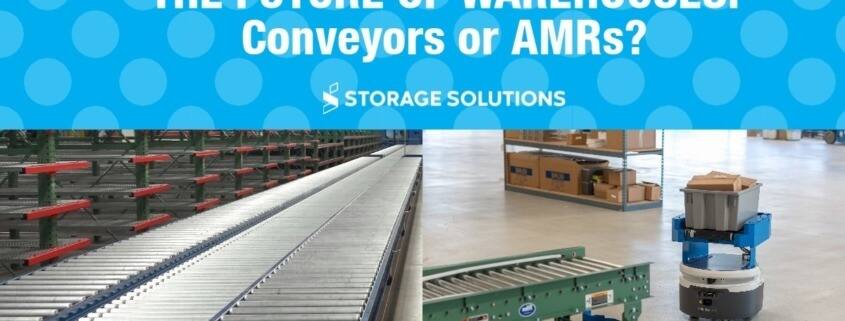The Future of Warehouses: Conveyors or AMRs
For decades, conveyor systems have been a standard solution in warehouses to move products through the fulfillment process. They grew popular because they can handle the heavy-lifting of transporting products while saving the wear-and-tear on your workers, who would otherwise be required to move those products physically.
Unfortunately, conveyor systems can be expensive, bulky, and take up too much room on the warehouse floor. More importantly, they offer an inherent lack of flexibility as companies adapt to changes in the way consumers are ordering products.
One solution we see in this area is integrating autonomous mobile robots (AMRs) alongside conveyors. For the right tasks, these AMRs can give businesses the adaptability to adjust their operations to meet where consumer demand is going. For warehouses and distribution centers, flexibility is more important now than ever. The speed of change is accelerating, and warehouses that rely solely on conveyor systems may not be able to react with the swiftness they need to.
Where AMRs can replace conveyors is in the areas of transportation and work distribution. They assist in moving products from one pick zone to the next or from a pick zone to a packing area or a quality control area. They can also move products from pick locations to a put-to-light area. Several applications potentially make sense for this change. Really, other than when a package must move through a place at a very high rate, AMRs can potentially make sense to replace conveyors.
By integrating AMRs, you can have your labor force working on more valuable tasks like picking versus physically moving products themselves. We have broken down the many advantages of these AMRs in warehouse operations prior (link), but this relatively new technology is a smart, flexible technology that can sometimes replace functionality historically handled by conveyance.
Look, conveyors will never go away completely. There are some things a conveyor does that really can’t be replaced altogether. Especially with high-speed transportation or sortation, a conveyor will probably be needed. However, full reliance on these monuments of infrastructure may keep your company from adapting as necessary to changes within the supply chain industry.
Really, an investment like this is an investment in your facility’s ability to be dynamic in response to demand changes. As e-commerce continues to grow at an unprecedented pace, facilities need to follow suit and understand how to react accordingly. By prioritizing adaptability in your processes, you can meet the challenge of changing demand quicker. That means down the road, your costs will be fewer, your downtime will lessen, and ultimately your customers will be more satisfied.
Of course, if you need any assistance in evaluating your facility design, the Storage Solutions team will help. Our experts have decades of experience in equipping warehouses and distribution centers with the right mix of tools to get the job done right. We understand that, as the industry continues to change, adaptability is becoming increasingly important. Armed with the right combination of technology with tried-and-true mechanisms, warehouses can respond to dynamic changes with relative ease.
If you are considering adding conveyor systems to your facility, talk with us first. While we recognize the value that these systems have traditionally brought to warehouse operations, technology has evolved to the point where they may not be the best option any longer. Our team of experts can talk with you about your processes, challenges, and then design a custom workflow to amplify efficiencies without breaking the bank.




